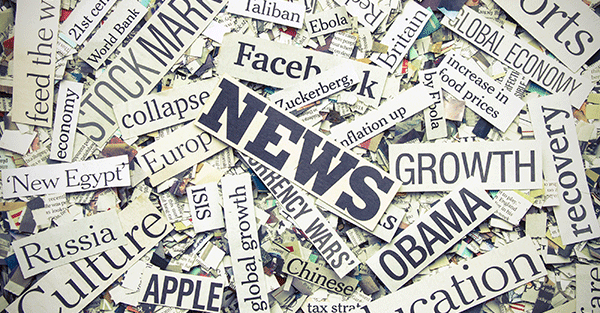
What kind of fake news is most damaging? Is it the kind that puts out a conspiracy theory with no evidence? Or is it a headline story that can easily be debunked, designed to ride a wave of viral clicks which only lasts hours or days?
Those aren’t the most dangerous types of fake news. The real problem is when trusted mainstream media sources roll out a propaganda campaign. And that happens basically every day.
In fact, the whole “fake news” agenda is part of a campaign of disinformation.
He insisted in a speech that he too thought somebody needed to step in and curate information of this wild, wild West media environment. Nobody in the public had been clamoring for any such thing, yet suddenly the topic of fake news dominates headlines on a daily basis.
It’s as if the media had been given its marching orders. Fake news they insisted was an imminent threat to American democracy.
But as somebody who studied the industry that seeks to manipulate all of us on behalf of paid interests, I know that few themes arise in our environment organically.
A noted propagandist told me, “It’s like a movie,” he said, and it gave me chills at the time.
“Nearly every scene or image that crosses our path in daily life,” he said, “was put there for a reason. Often by someone who paid a lot of money to place it there.”
What if the whole anti-fake news campaign was an effort on somebody’s part to keep us from seeing or believing certain websites or stories by controversializing them or labeling them as fake news?
Attkisson explains that when she followed the money, it led back to Google parent company Alphabet’s CEO Eric Schmidt. He volunteered to advise Hillary Clinton’s campaign and donated millions of dollars to her election bid.
They then got Media Matters involved, who reportedly convinced Facebook to support their “fake news” efforts. The idea was that if they could be the ones to label news fake, they would have ultimate control over the narrative. People would rely on Facebook and Google to curate real news and teach them what was fake news.
Attkisson said:
I’m not the only one who thinks this whole thing smacked of the rollout of a propaganda campaign.
She gives two main ways to tell if powerful interests are trying to manipulate opinion.
Number one, when the media seems to be trying to shape or censor facts and opinions rather than report them.
Number two, when so many in the media are reporting the same stories, promulgating the same narratives, relying on the same sources — even using the same phrases… When everybody’s on the same page, it might be the result of an organized campaign.
Attkisson’s final warning is about efforts to teach “media literacy–as in: we’ll tell you who to trust and who not to trust.”
Lawmakers at the state and local level want their version of “media literacy” to be taught in public schools. But these people try to fool the public into thinking they are neutral authorities, while actually having their own hidden agenda.
But you need to remember that when interests are working this hard to shape your opinion, their true goal might just be to add another layer between you and the truth.
